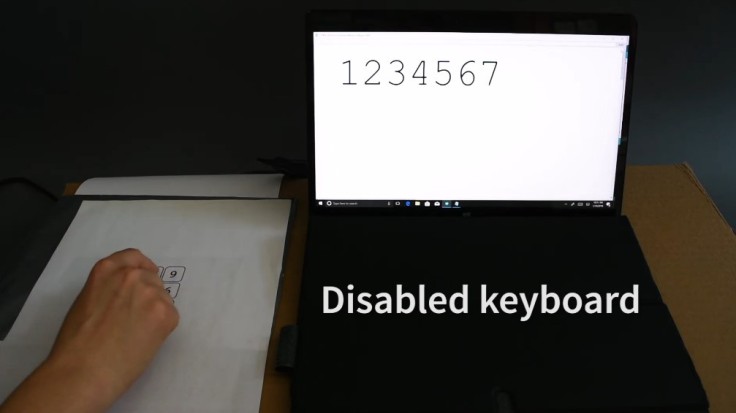
In the future, we could be using paper-based electronic interfaces as remote controllers or keyboards. Well, that is not far fetched as proven by a group of researchers from Purdue University.
Printing electronic circuits on paper is not a new concept. The problem is that paper burns when it comes in contact with hot material. In 2013, three Chinese scientists discovered a way to create a liquid metal that can be used as ink on paper, fabric, and even leaves.
The University of Purdue researchers have taken that discovery to the next level. They found a way to make an electronic interface printed on paper. The innovative printing process can turn any paper or cardboard into a keypad or other human to machine interfaces.
So, how does it work? The researchers created a printing process that will allow them to coat a sheet of paper with "highly fluorinated molecules." That "omniphobic" coating makes the paper resistant to dust, water, and oil. Once that is achieved, they can then print several layers of circuits onto the paper without smudging the ink.
That printing process will then help facilitate the creation of vertical pressure sensors. These are self-powered electronics that are completely wireless. Simply put, it can create its own power when it comes in contact with the user. This effect is called triboelectric charging. Once it is powered, it can then communicate with any electronic device wirelessly. Think, Bluetooth capability.
The researchers said that new technology could also be used to make smart packaging out of conventional cardboard. It will let consumers interact with food packaging. Users can check if food is safe to eat or even sign the package by simply dragging their finger over the box.
The team also demonstrated that they could turn a paper into a keypad and then a music player interface. The researchers published three videos demonstrating how the printing process works.
The paper-based electronic interface at work
The first video shows how they turned a sheet of paper into a wireless RF SPE keypad. In the video, a sheet of paper is shown with a numeric keypad printed on it. The user then applied the aqueous solution on the paper. A paper towel was then placed on top of the paper to spread to absorb the excess solution.
The demo continued with the second video: this time, showing the treated paper in action. The paper is now turned into a triboelectric paper keypad. The user then tapped the numbers one by one. With each keystroke, the corresponding number appeared on the laptop screen.
In the third video, we can see how the treated paper performs as a wireless RF SPE music player interface.
In the video, a sheet of paper is shown with triboelectric generators printed on its back while rock music plays in the background. The user then dragged the slider to turn the volume down and then turned it back up again. Then, the user pressed the "next" icon that played the next song before muting the player by pressing the "mute" icon.
You can read their published work at ScienceDirect









